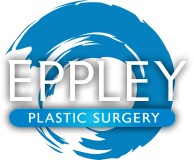Your Questions
Your Questions
Q: Dr. Eppley, I saw a post from last year in which you responded to a question regarding whether PRP/stem cells would be beneficial for Atrophic Rhinitis. I am wondering if you are interested in performing PRP on the turbinates. I have travelled to get PRP injections and have recieved some benefit but need further injections and would perfer to find a way closer to home. In my case, I have sufficient turbinate tissue but it has been damaged from cauterization so I am hoping to get further healing of the tissue.
A: Since you have received benefit from PRP injections to the turbinates previously, there would be no reason that you would not get further benefit by additional injection treatments of your atrophic rhinitis. The one caveat that I would add is that you consider the addition of a small amount fat with the PRP placed into the turbinates or go with fat injections alone. Fat has stem cells, (which PRP does not, and this should produce a more profound long-term rejuvenation of the turbinates than the short-stimulus that PRP provides. PRP can only stimulate the cells that are there while fat can create cellular rejuvenation and mucosal tissue regeneration, which ultimately is responsible for their function.
Dr. Barry Eppley
Indianapolis, Indiana
Q: Dr. Eppley, Do you use stem cell therapy to fix atrophic rhinitis…to regenerate nasal bone, tissue and mucosa, particularly, nasal mucosa? I have a bad dry nose which is primarily atrophic rhinitis three years after the partial removal of nasal turbinate. All the medication from doctors does not help much. So I can’t wait to find out how stem cell therapy and tissue engineering are going on for help with atrophic rhinitis. I read on other webpages that one plastic surgeon says you are the only doctor in the states doing this. Is that true? Thank you very much for your time. I’d really appreciate if when you kindly answer my question.
A: The treatment of atrophic rhinitis is a difficult problem for which there are no known therapies that are universally effective. The use of injectable autologous therapies offer promise for a lot of difficult clinical conditions in which some regeneration of function or regeneration of actual tissues would be therapeutic. Current autologous injection therapies include PRP (platelet-rich plasma) fat and stem cells. PRP is an extract of one’s own blood that contains platelet concentrates which have numerous potent growth factors in them. Fat concentrates are centrifuged or filtered aliquots of fat and stem cells. Stem cells can be isolated from fat but must be done concurrently as a direct isolate from the patient’s fat and immediately re-injected. The FDA currently bans the growth of stem cells from the patient as an isolated step in cell culture as a delayed reimplantation procedure.
The best approach currently for treating non-healing wounds and dysfunctional tissue elements, in my opinion, is the combination of PRP with a fat/stem cell concentrate. The entire nasal lining, septum and middle turbinates could be injected with up to 5ccs of this combined autologous therapy with the goal of reducing the degree of atrophic rhinitis. Understand that this is not exclusively stem cells but is a mixture of autologous elements that does partially include some stem cells. Whether this would be effective for atrophic rhinitis is not known as the primary problem is that the main producer of the moisturization of air (inferior turbinate) is missing. But whether the middle turbinate and other areas of nasal lining can compensate for it but being stimulated is the theoretical basis of the injections. Because it is an autologous therapy, there is no harm…it is just a question of how much benefit, if any, can be achieved.
Dr. Barry Eppley
Indianapolis, Indiana

